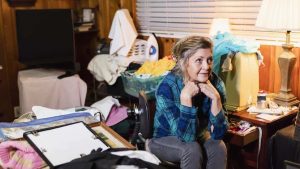

Although the most common diagnosis is dementia, others are depressed, have a paranoid psychosis, or abuse alcohol. There is usually gross self and domestic neglect, often with hoarding and social withdrawal. Patients with this syndrome (also known as senile self-neglect or senile squalor syndrome) often present to units for medicine of the elderly. Claudia Cooper, in Brocklehurst's Textbook of Geriatric Medicine and Gerontology (Seventh Edition), 2008 Senile self-neglect (Diogenes syndrome) The Mental Capacity Act may prove helpful to manage patients if they lack capacity and their neglect is significantly impairing their health.Ĭornelius Katona. 142 Daycare might maintain an individual, but some form of institutional care usually becomes necessary. Compulsory hospitalization is difficult to accomplish, and mortality is high apparently successful rehabilitation is usually followed by relapse. 141 Most people with Diogenes syndrome live alone, but a number of cases of folie à deux have been reported. Some authors have suggested that frontal lobe degeneration or obsessive compulsive disorder tends to be present if those patients are investigated thoroughly, although this is usually difficult to diagnose as patients are uncooperative. 140 For others, the syndrome can be understood as an expression of abnormal personality traits, in reaction to stress and loneliness or as the end stage of long-standing reclusiveness. Several studies have reported that approximately one third to one half have no psychiatric illness and tend to have higher than average intelligence. Rarely patients have an obsessional disorder.

They usually exhibit gross self-neglect and domestic neglect, often accompanied by hoarding and social withdrawal. Patients with this syndrome (also known as senile self-neglect or senile squalor syndrome) often come initially to departments of geriatric medicine.

Fillit MD, in Brocklehurst's Textbook of Geriatric Medicine and Gerontology, 2017 Senile Self-Neglect (Diogenes Syndrome) Finally, the identification of the deceased may be compromised by decay and/or postmortem animal activity.Howard M. Attending police may suspect robbery due to disarray of the house and homicide due to apparent “bleeding” around the body from purging of putrefactive fluids, injuries from falls, or postmortem animal activity and “blood stains” throughout the house from antemortem injuries and/or fluid spread by animals. Treatable medical conditions are often present in advanced stages, and features of hypothermia may be found. Blood or putrefactive fluids may be spread throughout the house by pets. Bodies may be traumatized from postmortem animal depredation by rodents or pets (eg, cats, dogs), and injuries such as bruises and lacerations may be present from falls associated with terminal illnesses or alcoholism. Bodies are often filthy, with parasitic infestations, and are often putrefied due to the social isolation of the deceased and the delay in the finding of the corpse. Examinations of the death scenes are often difficult as victim's houses are in a state of disrepair, with filth and clutter, and pet dogs may resent the intrusion of strangers. A number of typical features are found in the forensic evaluation of these deaths as the cases usually initiate medicolegal investigations due to the circumstances and the lack of recorded medical histories. Abstract Diogenes syndrome is a syndrome described in the clinical literature in elderly individuals characterized by social isolation and extreme squalor.


 0 kommentar(er)
0 kommentar(er)
